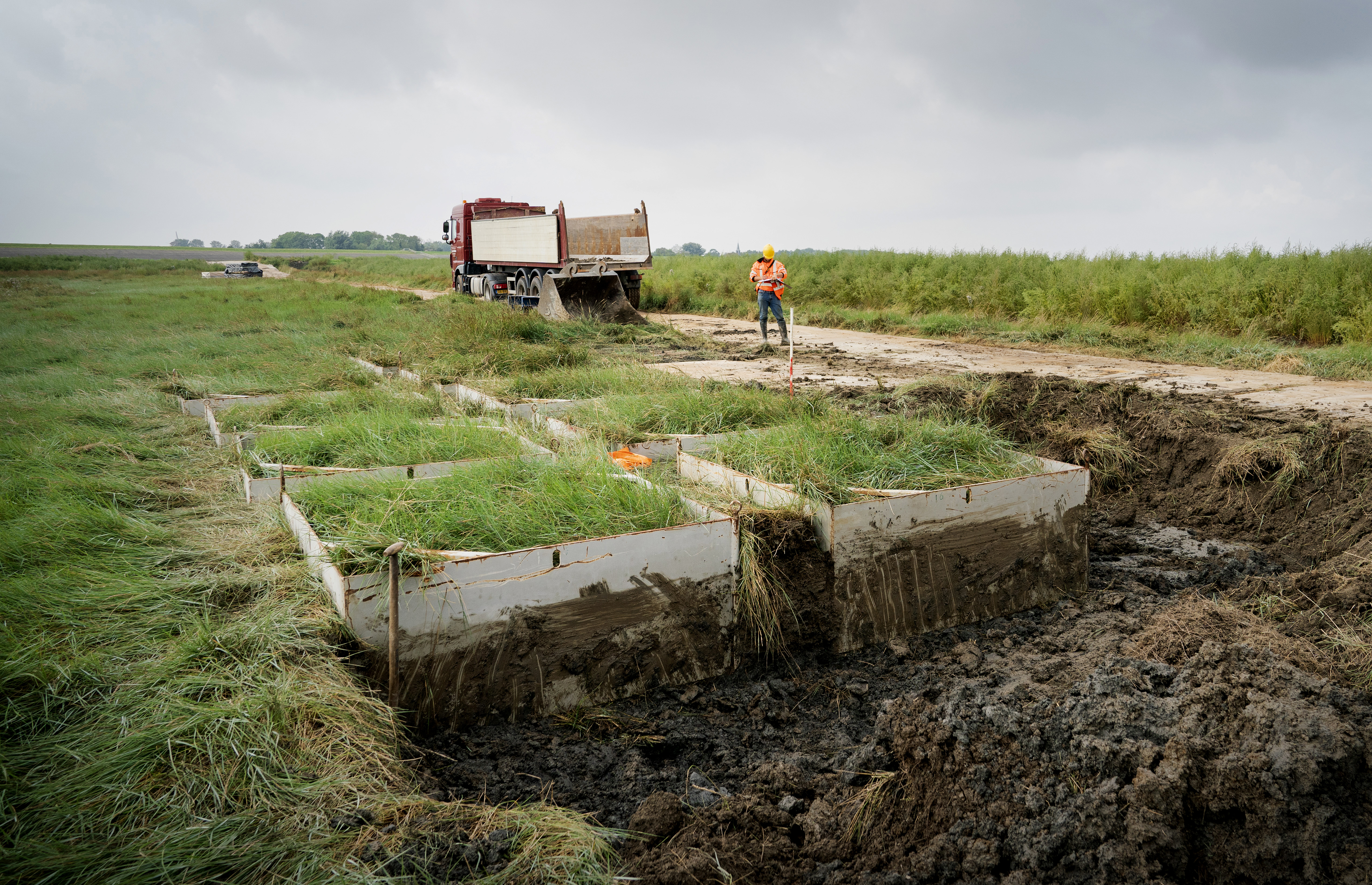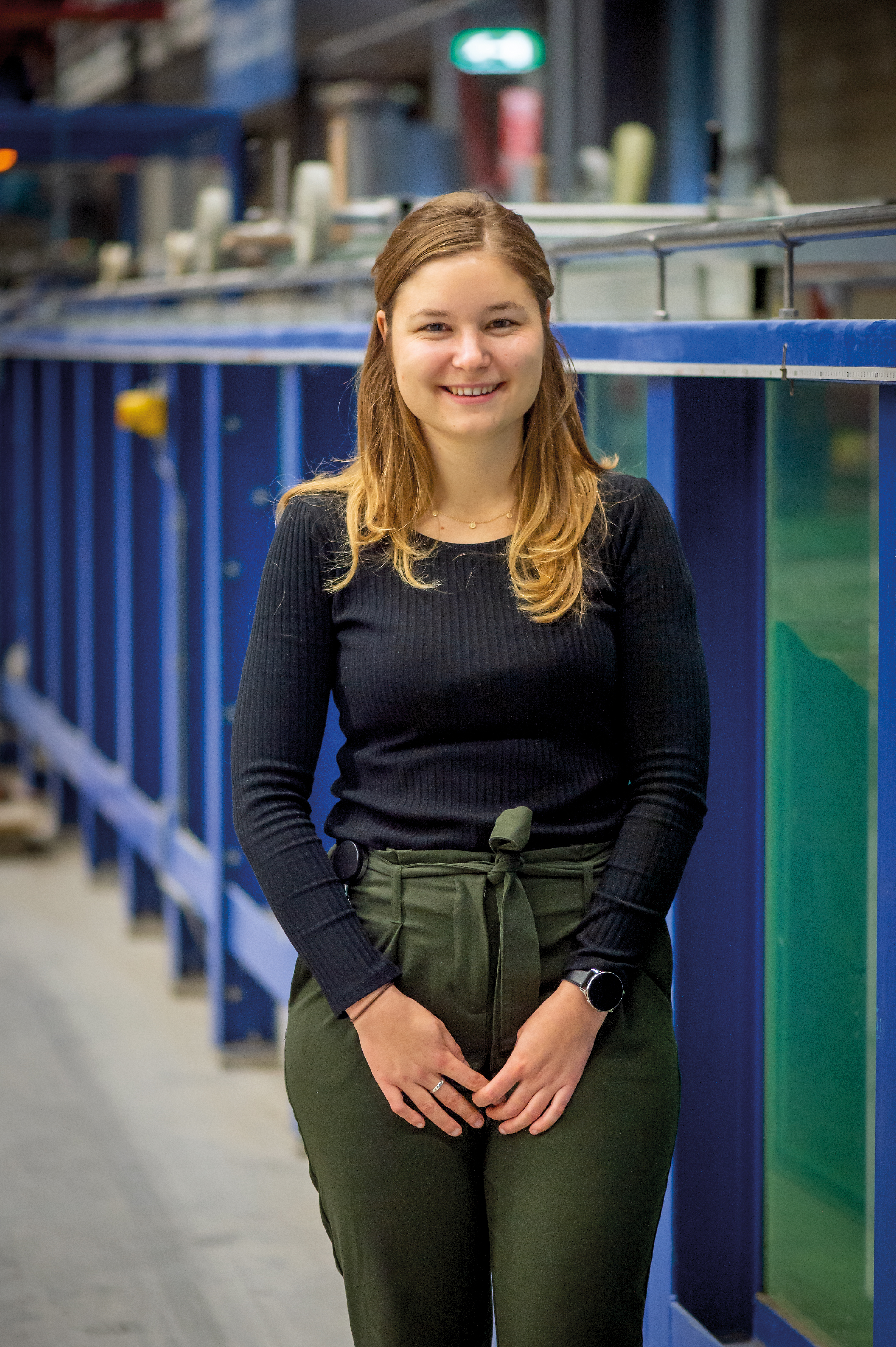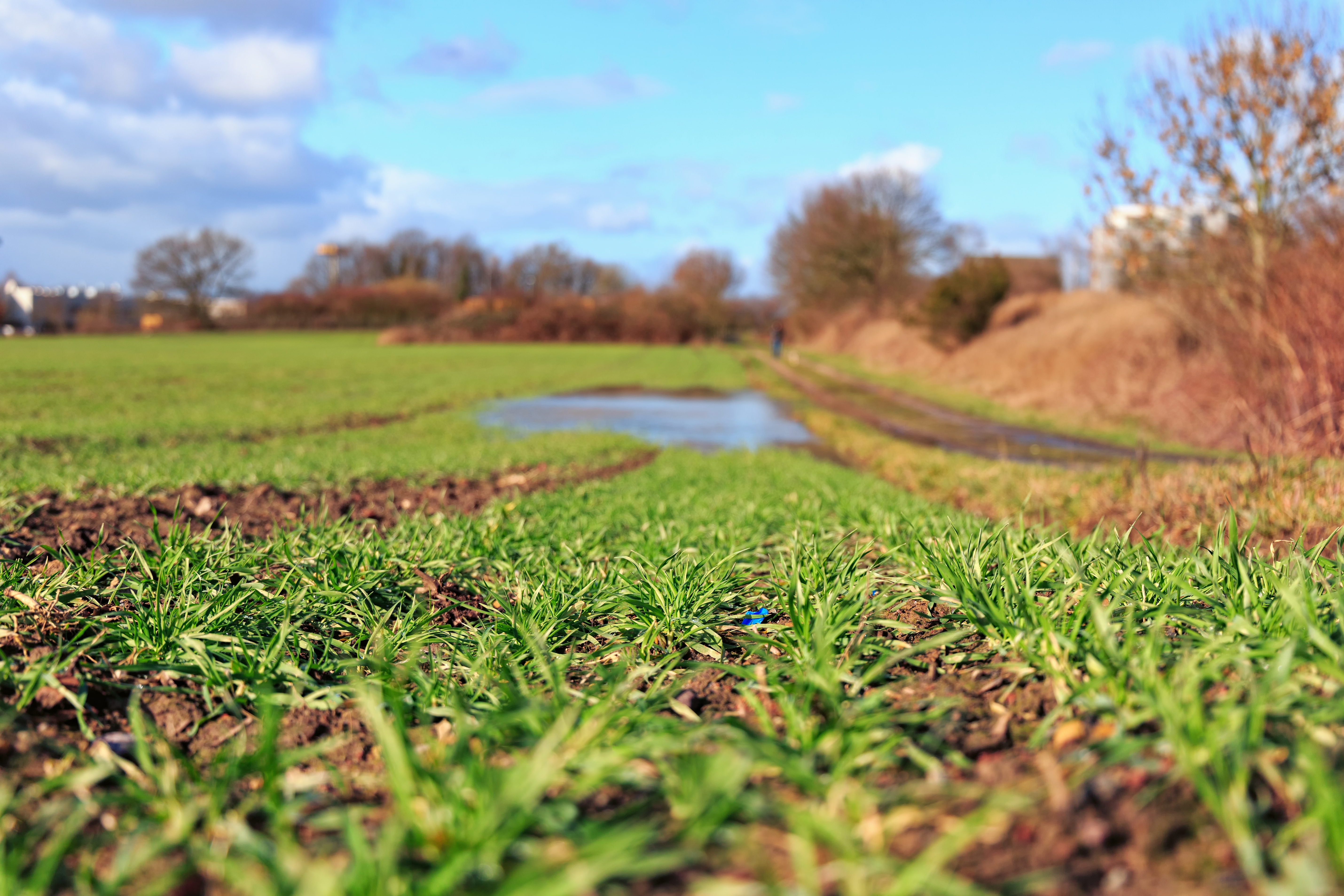Salt marsh grasses to protect the dike
What effect do salt marsh grasses have on the strength of waves that break on a dike? Deltares is studying this question in the Delta Flume in collaboration with Wetterskip Fryslân, TU Delft, University of Twente and NIOZ. Blocks of soil from the salt marsh outside the dike near the village of Paesens-Moddergat were brought to Delft for this purpose. Salt marshes could contribute to flood protection in the Netherlands.


Cutting the salt marsh vegetation blocks at Paesens-Moddergat




In response to sea level rise, dikes are being raised and widened so that they continue to meet the safety requirements. As well as ‘hard’ measures such as sheet piling and asphalt, there is an increasing research focus on ‘soft’ measures. ‘That means you can make the most of the natural properties of ecosystems such as the salt marshes. It’s just that we don’t yet have lot of practical understanding of these natural processes,’ says Vera van Bergeijk of the Coastal Structures and Waves department at Deltares.
Flood defences
Scientific research has already shown that the salt marshes – strips of land outside the dikes that border the sea – make flood defences more effective. In addition to the height of the salt marsh, the vegetation can help to reduce the wave load on the dike as well. The waves that reach the dikes are expected to be less powerful because of the vegetation. And there is another advantage: vegetation can retain silt – fine clay particles – from the Wadden Sea, allowing the land in front of the dike to grow in line with sea level rise. And that opens up new solutions for the Flood Protection Programme: using these vegetated areas in smart ways makes it possible to reduce dike height, width and dike revetments.

Green dikes rather than strips of asphalt
Barry Ros is a project manager for the Fryslân water authority, which wants to investigate how natural measures can help to make future-resilient dikes.
‘There are salt marshes and summer polders (the parts of the salt marsh used for grazing cows, sheep or horses) near a lot of dikes in Friesland. This foreshore sometimes extends for several kilometres. The blue-grey grass that grows there...
Read the interview

Placing the blocks in the Delta flume.
Superstorm
Last September, dozens of two-square-metre blocks of soil were dug out of the salt marsh to the northeast of the Frisian town of Paesens-Moddergat and taken to Delft. ‘We are simulating a superstorm in the Delta Flume’, says Van Bergeijk. ‘We have built a ten-meter-high dike, in front of which we are placing the blocks of salt marsh grass. We are conducting a range of measurements. They include wave height meters to measure the reduction of wave height above the salt marsh where the vegetation is located. In that way, we can determine how much the salt marsh vegetation reduces the wave impact. We are also looking at the erosion process in the salt marsh soil. When is the salt marsh vegetation broken off and when does the clay beneath the vegetation get washed away? And what effect does the height of the vegetation have on the dike load?’ Students, PhDs and postdocs from TU-Delft, NIOZ and University of Twente are helping with the measurements and the analysis of the collected data.
“A green dike looks better in the salt marsh landscape than a strip of asphalt”
Barry Ros, project manager for the Fryslân water authority
Green dikes rather than strips of asphalt
Barry Ros is a project manager for the Fryslân water authority, which wants to investigate how natural measures can help to make future-resilient dikes.
What do the Frisian salt marshes look like?
‘There are salt marshes and summer polders (the parts of the salt marsh used for grazing cows, sheep or horses) near a lot of dikes in Friesland. This foreshore sometimes extends for several kilometres. The blue-grey grass that grows there is called Sea Couch. This research on this salt marsh vegetation is new for us: most of our past experience is with studies of dike strength.’
What is the condition of the dikes in the north?
‘Some of the dikes with hard revetments no longer meet current standards, which were adapted in 2017. Asphalt revetments were often applied to those dikes in the 1970s and they no longer meet today’s requirements. We are working hard on the implementation of the Flood Protection programme, combining ‘hard’ and ‘soft’ measures to upgrade dikes.’
Why are you focusing on natural measures?
‘If the research demonstrates that the salt marsh grass attenuates the waves, we can adapt designs to build more sustainable dikes that take up less space or require less clay, asphalt and concrete. In addition, we want to strengthen natural values and improve biodiversity. And appearances matter, too. A green dike looks better in the salt marsh landscape than a strip of asphalt.’
What will the water authority do with the results?
‘We expect to obtain the first results this summer and then we can incorporate them in the design and specification of our dikes in the future. If the salt marsh grass reduces wave loads by 10 to 15 percent, that’s quite a good result with a significant effect on the upgrade work needed. This knowledge is also relevant to dikes in Groningen and Zeeland.'


The side walls are lifted so that the blocks can be pushed close together


Raising waves step-by-step
The Delta Flume is ideal for this work because it can be used to perform full-scale measurements in extreme conditions. Van Bergeijk: ‘When you conduct a measurement in the field, everything often happens at the same time, and that complicates things. And we almost never have storms that are a severe enough to produce high waves. In the Delta Flume, we can easily raise the water level or waves step-by-step. We can change one parameter at a time, allowing us to understand the process better. You need to do this in order to come up with formulae that you can include in the flood risk calculations for dikes.’
The tests will take place in February. There will be several tests every day for three weeks. ‘We will also take measurements on the dike itself. The waves break on the dike and we measure the forces they generate on the dike slope.’ Blocks of grass or clay have been used in the Delta Flume in the past: the unique thing in this case is that blocks of salt marsh vegetation have never been tested before.

Inspection of the inserted block.
Plague of voles
Projects can sometimes take an unexpected turn. In November, voles were found in the salt marsh blocks stored in Delft. It turned out that, when the blocks were dug up in September, some voles came along for the ride. They had gnawed away at some of the blocks, making it impossible to use them. Deltares managed to respond quickly and, within a few weeks, they worked with the water authority to arrange for the permits and excavators to remove new blocks from the salt marsh in front of the Wadden Sea dike. Without voles this time.


